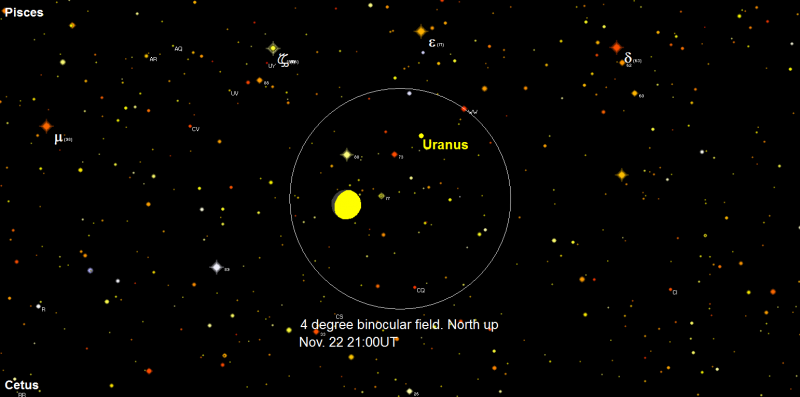2015 November 20
An easy to find Uranus
Uranus is usually an easy binocular object, but tracking it down among the background stars can often be difficult unless you have a signpost to point the way. On Nov 22 that signpost becomes the brightest object in the night sky – the Moon. The chart below shows the Moon (87% phase) and Uranus at 21:00UT inside a 4 degree circle – typical of the field of view of a pair of 15×70 or similar binoculars. This is a “correct” view, that is north is up as would be the case when using binoclars. The bright star to the north of the Moon (80 Piscium) at magnitude 5.5 is a similar magnitude to Uranus (mag 5.7) while the other 2 stars that form the almost equilateral triangle are slightly fainter at around magnitude 6. Careful focussing of binoculars should show Uranus with its diameter of 3.6 arcsec slightly bloated compared to the stars and in a telescope its tiny blue-green disk will be very obvious. For telescope users who have GoTo and like pressing buttons the position of Uranus at this time is RA 1h 3m 45s and Dec +6 deg 4.5 arcmin.
Uranus can often be a naked eye object from a dark site, but with the Moon only a degre or so away this is unlikely to be the case on this occasion.
| The British Astronomical Association supports amateur astronomers around the UK and the rest of the world. Find out more about the BAA or join us. |
